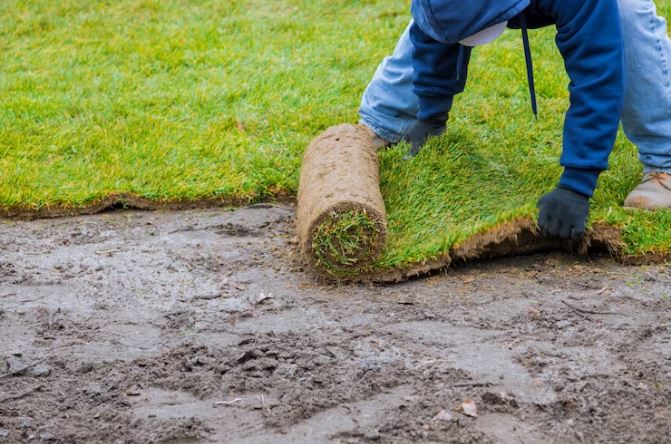Artificial grass, also known as synthetic turf, offers a green, lush look without the need for watering, mowing, or extensive maintenance. But not all artificial grass is created equal. In this blog post, we’ll explore how to spot high-quality artificial grass, helping you make an informed decision for your lawn or outdoor space.
The Look and Feel Test of Artificial Grass
One of the first things to consider when evaluating artificial grass is how it looks and feels. High-quality synthetic turf should closely resemble natural grass.
- Color Variation: Top-quality artificial grass often has multiple shades of green, sometimes with brown thatch mixed in. This variation makes it look more natural and less like a carpet.
- Blade Shape: Look closely at the grass blades. High-quality artificial grass usually has blades with different shapes and textures, mimicking the variety found in natural lawns.
- Softness: Run your hand over the grass. Good quality synthetic turf should feel soft and pleasant to touch, not scratchy or plastic-like.
- Bounce-back: Step on the grass and then lift your foot. High-quality artificial grass will spring back up quickly, while lower quality options might stay flat.
Density and Weight of Artificial Grass
The density of the grass fibers plays a crucial role in the overall quality and appearance of artificial grass. Here’s how to assess it:
- Fullness: Look at the base of the turf. High-quality artificial grass will have a dense, full appearance with little visible backing.
- Weight: Better quality synthetic turf tends to be heavier due to more fibers and a sturdier backing.
Backing and Drainage of Artificial Grass
The backing of artificial grass is like its foundation. It holds the grass fibers in place and allows for proper drainage.
- Sturdy Backing: High-quality artificial grass will have a strong, durable backing that doesn’t easily tear or separate.
- Drainage Holes: Look for small holes in the backing. These are essential for allowing water to drain through, preventing puddles on your lawn.
UV Protection and Heat Resistance
Good quality synthetic turf should be able to withstand sun exposure and high temperatures. Here’s how to tell:
- UV Resistance: Ask about UV protection. High-quality artificial grass is treated to resist fading and maintain its color even in strong sunlight.
- Heat Resistance: Touch the grass on a sunny day. Better quality options will feel cooler to the touch compared to lower quality artificial grass.
Durability and Warranty
Investing in artificial grass is a long-term decision. Here’s how to ensure you’re getting a durable artificial grass:
- Fiber Material: Look for artificial grass made from high-quality materials like polyethylene or nylon. These tend to be more durable and realistic-looking.
- Warranty: Check the warranty offered. High-quality synthetic turf often comes with longer warranties, sometimes up to 10 years or more.
Environmental Considerations
If environmental impact is important to you, look for artificial grass that is:
- Lead-Free: Ensure the synthetic turf is certified lead-free.
- Recyclable: Some high-quality artificial grass can be recycled at the end of its lifespan.
The Price Factor
While it’s tempting to go for the cheapest option, remember that with artificial grass, you often get what you pay for. High-quality synthetic turf might be more expensive upfront, but it usually lasts longer and looks better over time.
A good quality artificial grass can provide years of enjoyment with minimal maintenance, making it a worthwhile investment for many homeowners and businesses. Whether you’re looking to green up a small balcony or cover a large backyard, choosing the right artificial grass can transform your space into a lush, inviting area that looks great all year round.


